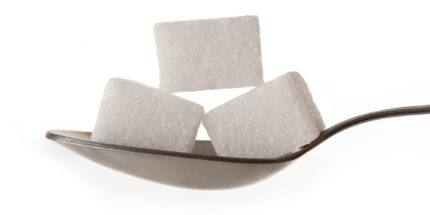Commercial foods in the United States for toddlers are high in sodium and added sugar, according to a new study.
Researchers used a 2012 database of more than 1,000 packaged infant and toddler foods and drinks sold in the U.S. They found about 72 percent of toddler dinners geared towards children between the ages of 1 to 3 were high sodium, meaning they contained more than 210 milligrams of sodium per serving, according to results published in Pediatrics yesterday.
The good news is that foods geared towards infants (under the age of 1) did not have any high-sodium content. More than 600 dry cereals, vegetables, fruits, and ready-to-serve dinners geared towards infants were low sodium. According to the Institute of Medicine, sodium levels per serving for toddlers should not exceed 210 milligrams per serving. However, in this study the average levels for toddler meals was 361 milligrams—one and a half times higher than the limit. Some meals ranged up to 900 milligrams in one serving.
Many infant and toddler foods also had added sugar in their ingredients. The limit for sugar content should not exceed 35 percent of calories per serving of sugar. Some dried fruit snacks for toddlers contained as much as 66 percent of calories.
“Some of the foods had about similar [sugar or salt] content to what we see in adult foods,” study co-author Dr. Mary Cogswell, a senior scientist in the division for heart disease and stroke prevention at the Centers for Disease Control and Prevention (CDC), told Live Science. “For example, in the category of savory snacks or salty snacks, the average sodium concentration, or amount of sodium per 100 grams, was about the same as you see in plain potato chips.”
The study also notes that almost a quarter of the nation’s children between the ages of 2 and 5 are overweight or obese.
According to the CDC, obesity prevalence was the highest among children (ages 2 to 4) in families with an income-to-poverty ratio of 100% or less (household income that is at or below the poverty threshold).
Black and Hispanic youths have a higher prevalence of obesity (20.2 and 22.4 percent respectively) than whites (14.1 percent) and Asians (8.6 percent).
The Grocery Manufacturers of America, a trade group whose members include makers of foods for infants and toddlers, issued a statement claiming because the study looked at food items from 2012, it does not accurately reflect the “healthy choices available in today’s marketplace,” including new products with reduced sodium levels.
Dr. Cogswell recommends that parents look at the nutrition label when shopping for these food items. Labels with “Reduced Sodium” or “Low Sodium” should have less than 140 milligrams per serving.
The study did not address foods served in a school or daycare setting for young children.
S.C. Rhyne is a blogger and novelist in New York City. Follow the author on Twitter @ReporterandGirl, http://Facebook.com/TheReporterandTheGirl and visit her website at http://www.TheReporterandTheGirl.com


